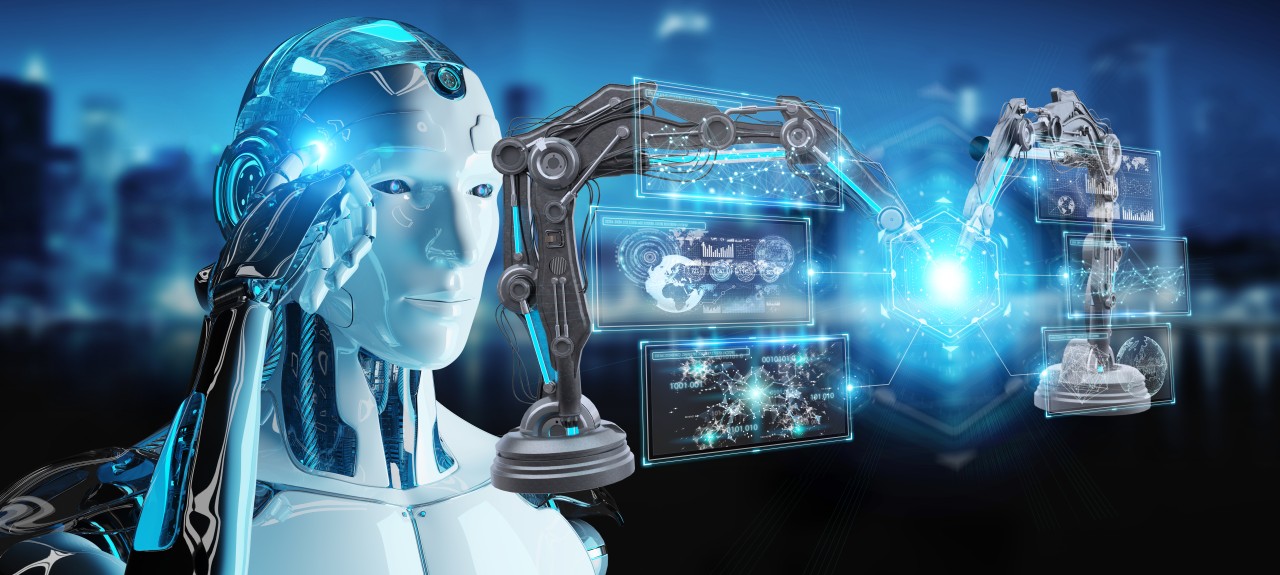The world’s largest online retailer, Amazon, recently announced one of its biggest workforce cuts ever — around 14,000 employees are losing their jobs. The decision has sparked global debate, not just about corporate restructuring, but about something much bigger: is artificial intelligence (AI) already replacing human workers?
While layoffs in the tech sector are not new, this round from Amazon feels different. It comes at a time when the company is financially strong and more profitable than ever. That’s why many are asking — if profits are up, why are so many people being let go? And does AI have something to do with it?
Let’s look at what really happened, why Amazon made this decision, how AI fits into the picture, and what it all means for the future of human employment.
1. What Happened: Amazon’s 14,000 Job Cuts
The Announcement
In late October 2025, Amazon revealed that it would cut roughly 14,000 corporate jobs as part of a massive organizational restructuring. These layoffs mainly affect human resources, operations, and administrative departments. According to internal messages from leadership, the goal is to make the company “leaner, faster, and more focused on innovation.”
Unlike earlier job cuts that followed periods of slowdown, this one came while Amazon’s financial reports looked strong. That raised eyebrows among industry watchers and employees alike. Why reduce staff when the company is thriving? The official explanation: Amazon is realigning its workforce to focus on emerging technologies — especially artificial intelligence.
How the Layoffs Were Communicated
What shocked many wasn’t just the scale of the layoffs, but how they were delivered. Thousands of employees received text messages early in the morning, telling them to check their email before coming to work. When they did, some found a termination letter waiting for them.
The abrupt, digital way the layoffs were handled sparked criticism online. Many described it as “cold” and “dehumanizing.” Ironically, a company that’s investing heavily in automation was accused of treating its people like machines.
The Bigger Plan
Although 14,000 jobs are being cut immediately, reports suggest Amazon may reduce as many as 30,000 roles by next year. However, the company insists it’s also hiring in other areas, particularly in AI research, cloud computing, logistics technology, and robotics.
So, this isn’t a simple case of downsizing — it’s a reshaping of the workforce. The company is replacing certain human functions with automation, while expanding roles that align with the future of AI-driven business.
2. Why Cut Jobs When Business Is Booming?
At first glance, it doesn’t make sense. Amazon’s profits are solid, online sales are stable, and its cloud computing arm, AWS, continues to dominate globally. So why the sudden job reduction?
The answer lies in a mix of efficiency, strategy, and technology.
Becoming Lean and Fast
Amazon’s executives often describe their goal as “working like a startup.” In a company with over a million employees, that means reducing layers of management and simplifying decision-making. The fewer the steps, the quicker the company can adapt to new technologies or market shifts.
Investing in Artificial Intelligence
The second and more significant reason is AI. Amazon has identified artificial intelligence as the next big frontier, similar to what the internet was in the 1990s. From its Alexa voice assistant and recommendation systems to warehouse robots and logistics optimization, AI is becoming central to Amazon’s operations.
But this evolution also means that many tasks once done by people — data analysis, process coordination, basic HR work — can now be handled by software. For example, machine learning algorithms can scan resumes, predict consumer demand, schedule deliveries, and even detect workplace inefficiencies.
Preparing for the Future
The layoffs are not a sign of weakness; they’re a preparation for a new era. Amazon is focusing resources on departments that deal with automation, AI, and cloud infrastructure. In short, the company is making room for the technologies — and the employees — of the future.
3. The Role of AI: Revolution or Replacement?
The rise of artificial intelligence is changing everything about how companies operate. But what’s still unclear is whether AI is simply transforming jobs or taking them away.
The Reality: Some Jobs Are Being Replaced
It’s undeniable that AI systems can now perform tasks that once required human workers. In offices, AI is handling data entry, report generation, and scheduling. In warehouses, robots pick and pack items faster than people. In customer service, chatbots handle millions of inquiries daily.
For companies, the appeal is obvious — AI doesn’t need rest, doesn’t call in sick, and doesn’t demand raises. It’s efficient and consistent. For workers, however, it feels like a quiet takeover.
At Amazon, many of the affected employees are in roles that AI can now perform more efficiently — like HR coordination, internal analytics, or logistics monitoring.
The Other Side: AI Also Creates Jobs
While AI removes certain types of work, it also creates new opportunities. Roles in AI development, machine learning, data analysis, cloud computing, and cybersecurity are growing rapidly. The challenge is that the new jobs require completely different skills.
For example, someone who worked as a data-entry operator might now need to learn how to manage AI tools, interpret their results, or oversee automated systems. It’s not that work disappears — it evolves.
AI as a Convenient Excuse?
Some critics argue that corporations use “AI efficiency” as a polite way to justify layoffs. It sounds futuristic and strategic — less like cost-cutting and more like innovation. In reality, both factors play a role. AI does improve productivity, but it also gives companies a reason to reduce payroll expenses.
4. The Human Cost Behind the Headlines
Behind every layoff announcement are real people — families, careers, and lives suddenly disrupted.
The Emotional Toll
Many Amazon employees shared their experiences anonymously online. Some described weeks of anxiety, fearing the “you’re terminated” email would arrive at any hour. Others spoke of sleepless nights and constant uncertainty.
For workers who had been loyal for years, being let go via a text message felt impersonal and cruel. It also raised broader ethical questions about how large corporations handle layoffs in the age of digital communication.
The Aftermath
Amazon says it’s offering support packages to those affected — including severance pay, continued benefits for a limited time, and access to career placement services. Some will be allowed to apply for other roles within the company.
However, finding new positions won’t be easy. Many companies across the tech industry are also cutting staff or adopting similar automation strategies. That means thousands of skilled workers will now compete for fewer openings.
The Impact on Those Who Stay
For the employees who remain, the work environment often changes drastically. Teams are smaller, workloads heavier, and morale lower. Survivors of layoffs often deal with guilt, stress, and fear that they might be next. Trust in leadership can take years to rebuild.
5. The Bigger Picture: AI and the Future of Work
The Amazon layoffs highlight a critical turning point: the world is entering a new era of automation-driven employment. AI isn’t just improving productivity — it’s redefining the very nature of work.
A Global Shift Is Underway
Across industries — from manufacturing to finance, from healthcare to journalism — artificial intelligence is streamlining processes and reducing the need for human oversight. Routine, repetitive tasks are being automated, freeing humans for more strategic and creative work. But this shift also means millions of traditional jobs will fade away.
The Skills Divide
One of the biggest challenges is the growing skills gap. Workers with digital, technical, or analytical expertise are in high demand, while those in traditional administrative or support roles are at risk. Experts estimate that by 2030, more than half of all jobs could be partially automated.
The solution isn’t to resist AI, but to learn how to work with it. The future belongs to people who can adapt quickly, learn continuously, and use technology to enhance their work.
Inequality and Opportunity
As AI reshapes the job market, economic inequality could deepen. High-skilled workers in tech-driven industries will earn more, while low-skilled workers may struggle to keep up. This imbalance could reshape societies unless governments and companies invest in massive reskilling programs.
6. Impact on India and Emerging Economies
How It Affects Indian Workers
Amazon employs thousands of professionals in India across corporate, tech, and support roles. Reports suggest that many Indian employees were part of this round of layoffs. The news is particularly concerning because India’s economy depends heavily on the outsourcing and IT service sectors, both of which are vulnerable to automation.
The Risk of Losing the “Outsourcing Advantage”
For decades, companies have outsourced back-office tasks to countries like India to save costs. But now, AI can perform many of those same tasks at near-zero marginal cost. This trend threatens to disrupt the traditional outsourcing model.
If global firms start automating instead of outsourcing, millions of service jobs in India and similar economies could be at risk.
Turning Challenge into Opportunity
Yet, there’s another side to this story. India also has one of the largest pools of tech talent in the world. If it can rapidly pivot toward AI innovation and education, it could become a global leader in AI development and deployment.
To achieve that, governments, universities, and private companies must work together to redesign education systems and create accessible training programs in AI, robotics, data science, and related fields. The faster this shift happens, the better the chance to stay ahead in the AI-driven economy.
7. What Workers Can Do to Stay Relevant
If AI is changing the nature of work, employees must change how they prepare for it. Here are some key survival strategies for the modern workforce.
1. Keep Learning New Skills
The days of “study once, work forever” are over. Every professional must become a lifelong learner. Online platforms offer affordable ways to learn data analysis, programming, and digital tools. Staying curious is your best insurance.
2. Develop “Human-Only” Skills
AI can’t replicate creativity, emotional intelligence, empathy, or ethical judgment. Jobs that rely on human understanding — teaching, design, therapy, leadership — will remain valuable.
3. Learn to Work With AI
You don’t need to become a coder, but you should understand how AI tools work. Learn to use them in your daily tasks. The best jobs in the future will be those where humans and AI collaborate.
4. Stay Flexible and Open to Change
The modern career path is not a straight line. Be open to changing industries, learning new roles, or starting fresh in a different field. Flexibility will help you adapt faster than automation can replace you.
8. What Companies and Governments Should Do
For Companies
- Be transparent and humane. Layoffs may be unavoidable, but communication should be honest and empathetic.
- Reskill instead of replace. Invest in training current employees for new tech-driven roles.
- Use AI responsibly. Technology should assist humans, not devalue them.
- Balance cost and culture. Replacing too many people with machines can hurt innovation and trust.
For Governments
- Upgrade education. Schools must teach AI literacy, coding, and problem-solving from early stages.
- Support retraining programs. Provide accessible upskilling options for displaced workers.
- Protect worker rights. Ensure that automation doesn’t create unfair labour practices.
- Encourage ethical AI. Set guidelines to ensure AI adoption benefits society, not just shareholders.
9. A New Era of Work: Cooperation Between Humans and Machines
The Amazon layoffs are more than a business decision — they’re a symbol of the AI revolution already underway. The line between “human work” and “machine work” is blurring faster than ever.
In the coming years:
- Routine tasks will disappear.
- Creative and strategic roles will grow.
- Continuous learning will be mandatory.
- Collaboration between humans and machines will define success.
AI is not the enemy of workers; it’s a tool. The real challenge is making sure workers, employers, and policymakers use it wisely.










